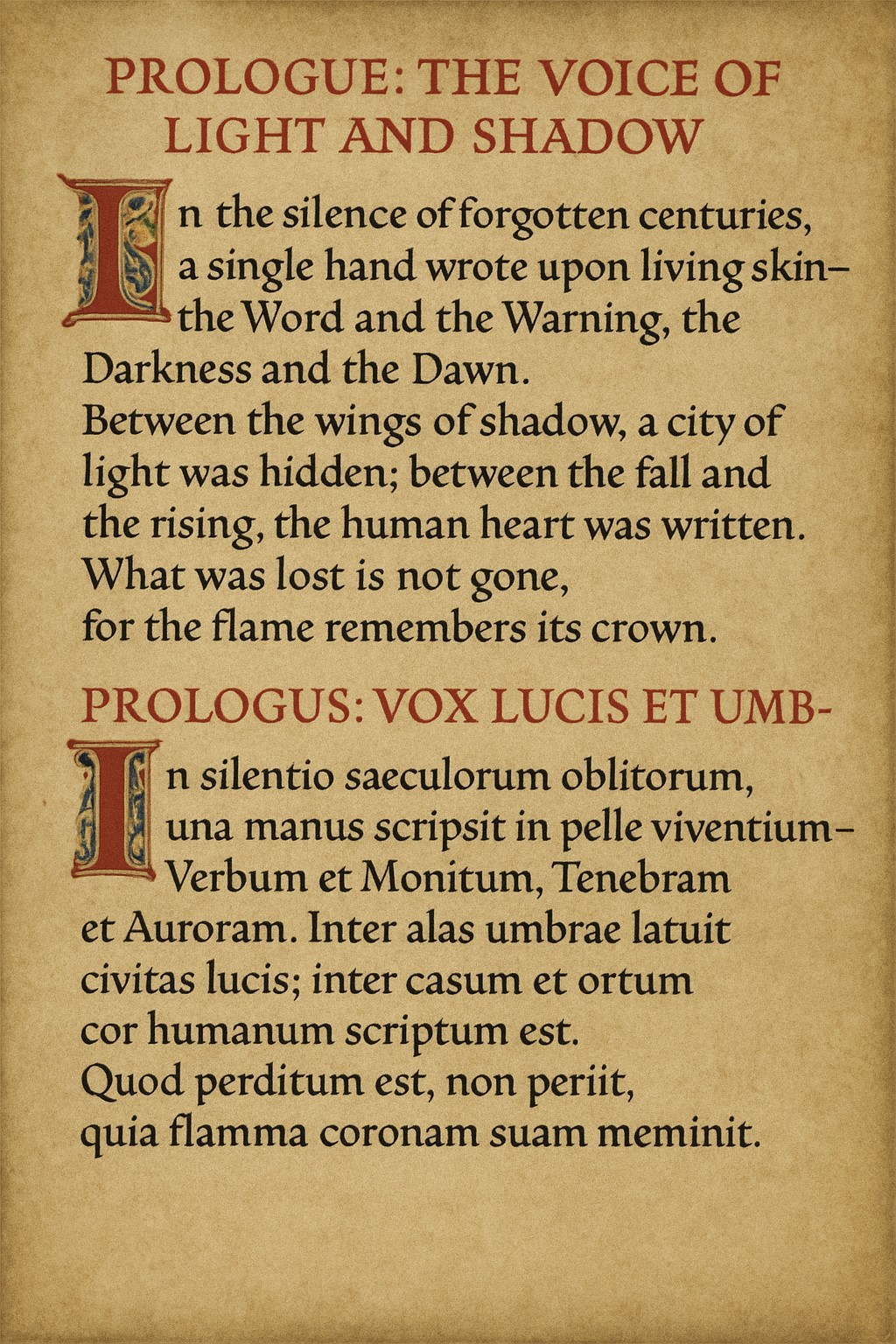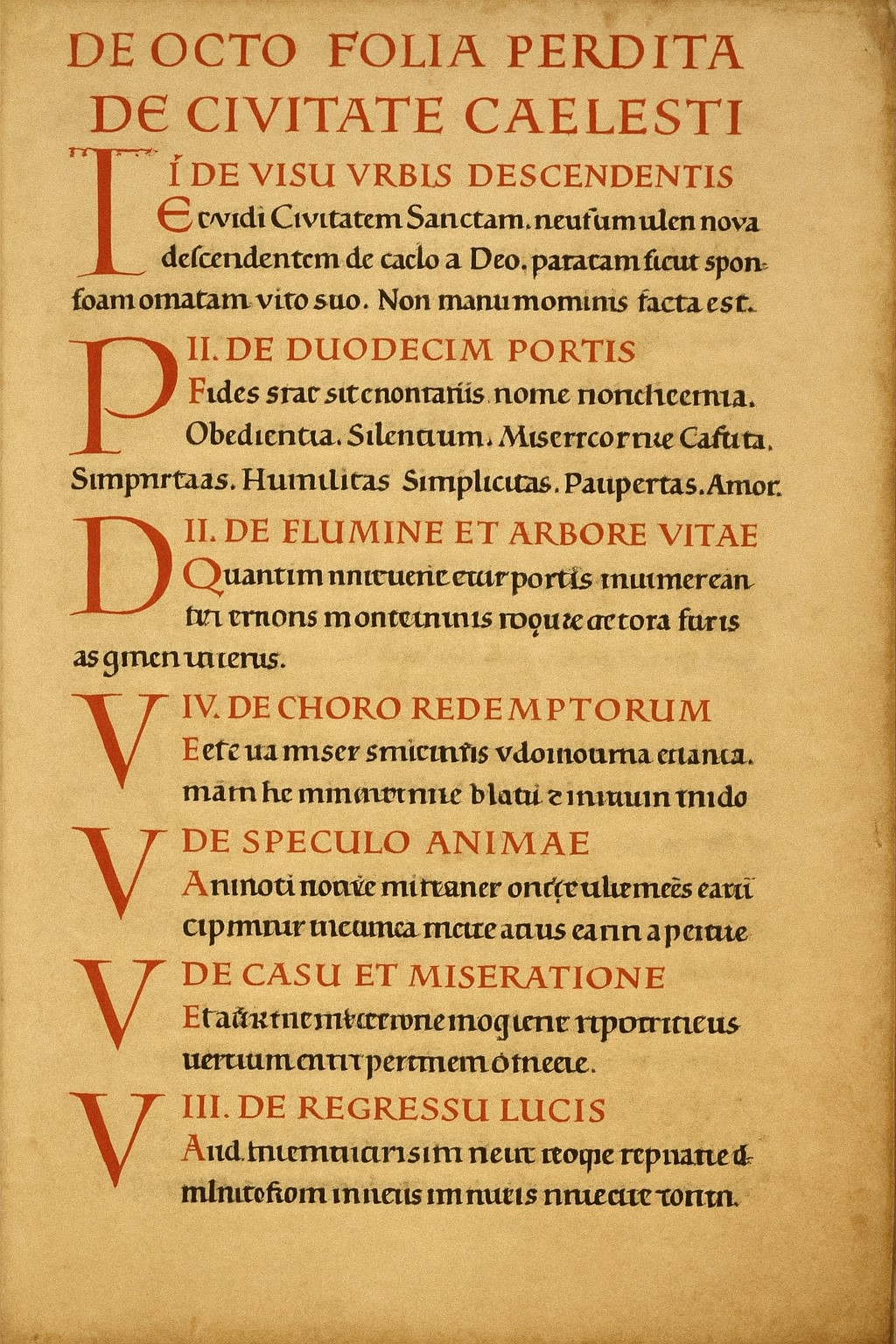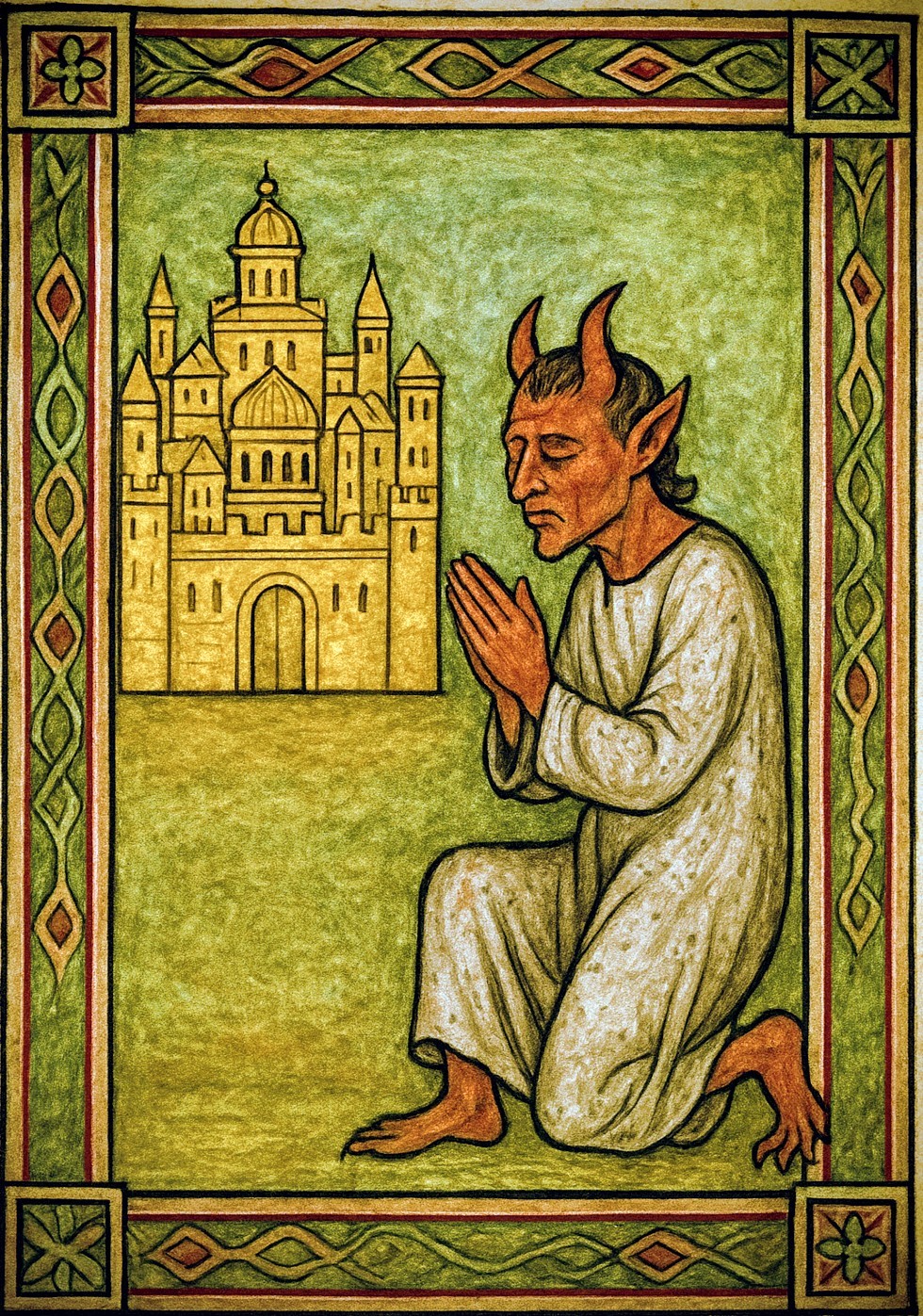The Eight Missing Pages of the Codex Gigas

Here is a reconstructed account of the eight missing pages of the Codex Gigas, as if they had truly been written by the Benedictine monk of Podlažice, in the 13th century — imagined through the lens of medieval theology, language, and symbolism.
The tone is reverent, monastic, and contemplative — fitting for what might have been the final movement of the world’s largest Bible.
✠ The Eight Missing Pages of the Codex Gigas ✠
“De Civitate Caelesti” — Of the Heavenly City
Page I – The Vision of the City Descending
“And I saw the Holy City, new Jerusalem, coming down out of heaven from God, prepared as a bride adorned for her husband.”
The first page begins with awe and radiance. The monk describes a city of gold and crystal, its walls transparent as air.
He writes that it is not built by human hands but spoken into being by the Word.
Each stone shines with light from within, and the streets ring with silent hymns.
“For there shall be no temple therein, for the Lord Himself shall be their temple, and the Lamb their everlasting light.”
The tone mirrors the Book of Revelation — but with monastic calm rather than apocalypse. The city is not a battlefield, but a resting place.
Page II – The Twelve Gates
Each gate bears a name: Faith, Hope, Charity, Obedience, Silence, Mercy, Chastity, Patience, Humility, Simplicity, Poverty, and Love.
Through these the soul must pass — not in one moment, but through a lifetime of striving.
Each gate, the monk writes, corresponds to one of the twelve hours of the monastic day:
as the sun moves across the sky, so the spirit moves from labor to contemplation.
“Blessed is he who knocks at every gate until one opens unto him.”
Page III – The River and the Tree
From the throne of God flows a river like crystal, dividing the city into twelve gardens.
Along the river grows the Tree of Life, its roots in prayer, its fruit in good works.
The text compares the tree to the monastery itself — its trunk the Rule of Saint Benedict, its leaves the brothers in obedience.
The fruit heals the nations: charity in act, mercy in speech, truth in silence.
“Who drinketh of that river shall thirst no more,
for the stream is the grace that runneth from the wounds of Christ.”
Page IV – The Choir of the Redeemed
This page describes the inhabitants of the city — saints, martyrs, and humble souls forgotten by the world.
They wear white habits and carry psalters in their hands. Their song has no words, for the silence of God is their melody.
The monk writes that each soul’s joy is unique:
“In heaven, no voice is louder than another,
yet each sings as though it alone were heard by God.”
Page V – The Mirror of the Soul
Here, the monk turns inward. He speaks not of the outer city, but of the inner Jerusalem — the soul purified by repentance.
The text likens the human heart to a tarnished mirror:
when pride clouds it, it reflects nothing; when polished by humility, it becomes the dwelling of light.
“As the walls of the city are built of clear stone,
so must the heart be made transparent by confession and tears.”
Page VI – The Fall and the Forgiveness
This page bridges the two worlds — heaven and hell.
It tells of the fallen angel, not as an eternal tyrant, but as a spirit whose memory burns with loss.
The monk writes:
“I saw the ancient adversary afar off, and he wept.
His chains were woven not of fire, but of remembrance.”
In this moment of vision, even the devil becomes a mirror for human despair — and a warning that the absence of love is the true abyss.
Page VII – The Returning Light
Here the imagery brightens again: dawn enters the city.
Angels move through the streets carrying bowls of light; the gates, once closed, open to those who have persevered.
The monk reflects:
“Night and Day shall kiss upon the threshold,
and all that was broken shall be made whole.”
He imagines the redeemed souls entering the city in silence, their steps echoing like prayer through marble corridors.
Page VIII – The Eternal Sabbath
The final page concludes the Gigas with peace, not thunder.
It describes the Eternal Rest, the “Sabbath that never ends.”
“And I heard a great stillness, as though all creation had drawn breath.
The Lord sat upon His throne, and beneath His feet lay the river of time, stilled forever.”
The last lines may have read:
“So ends the Book of the Reus,
but not the song of the soul.
For what is written in ink fades,
yet what is written in love endures.”
🕯️ Meaning in Context
If these eight pages had survived, the Codex Gigas would not end with darkness but with reconciliation — a movement from fear to mercy, from the image of the devil to the image of divine compassion.
It would transform the “Devil’s Bible” into something else entirely:
The Book of Return.
I Stepped Upun the Cold Earth
Between the Earth and Heaven / Entre a Terra e o CéU
Hymne van de Hemelse Stad


